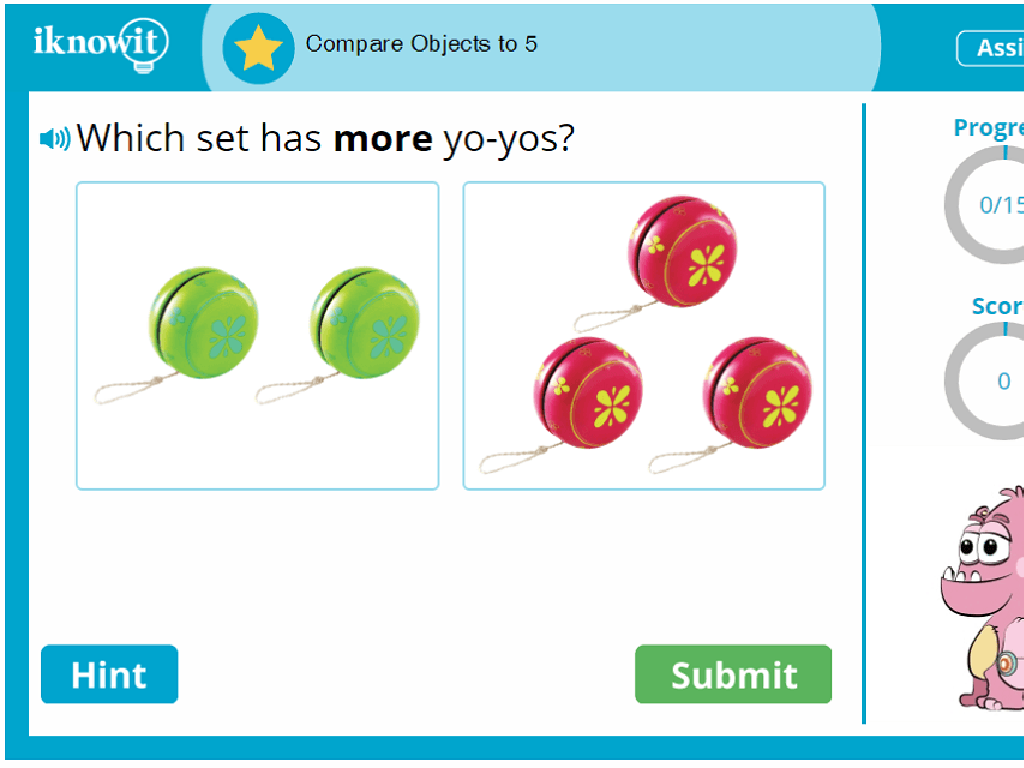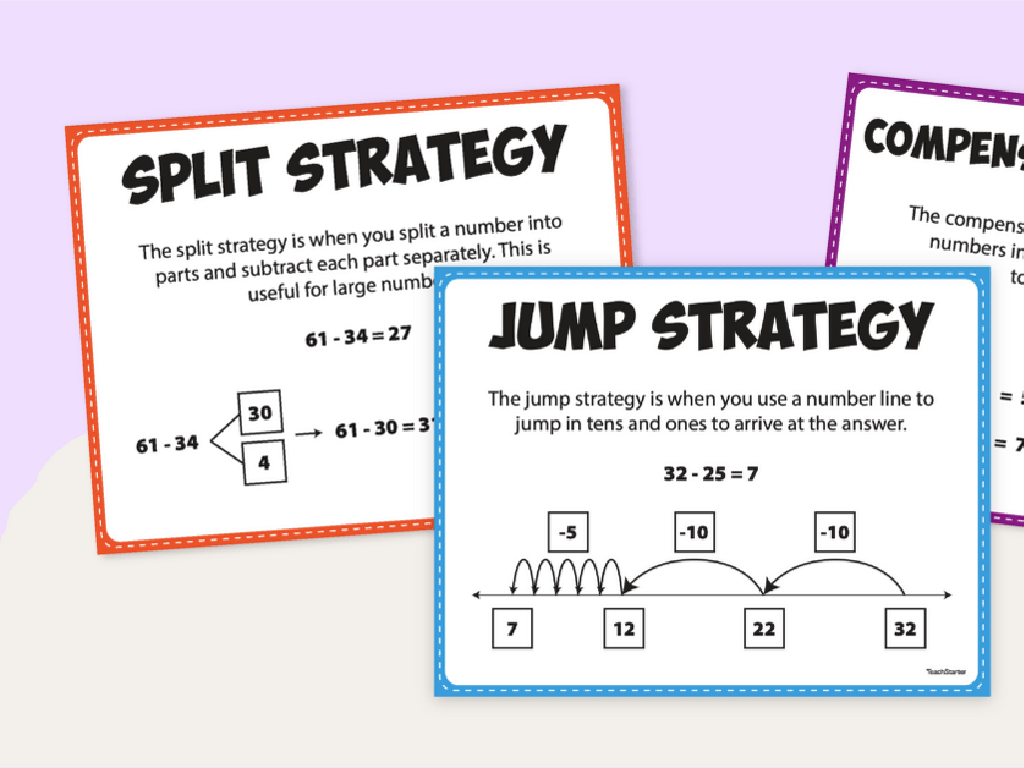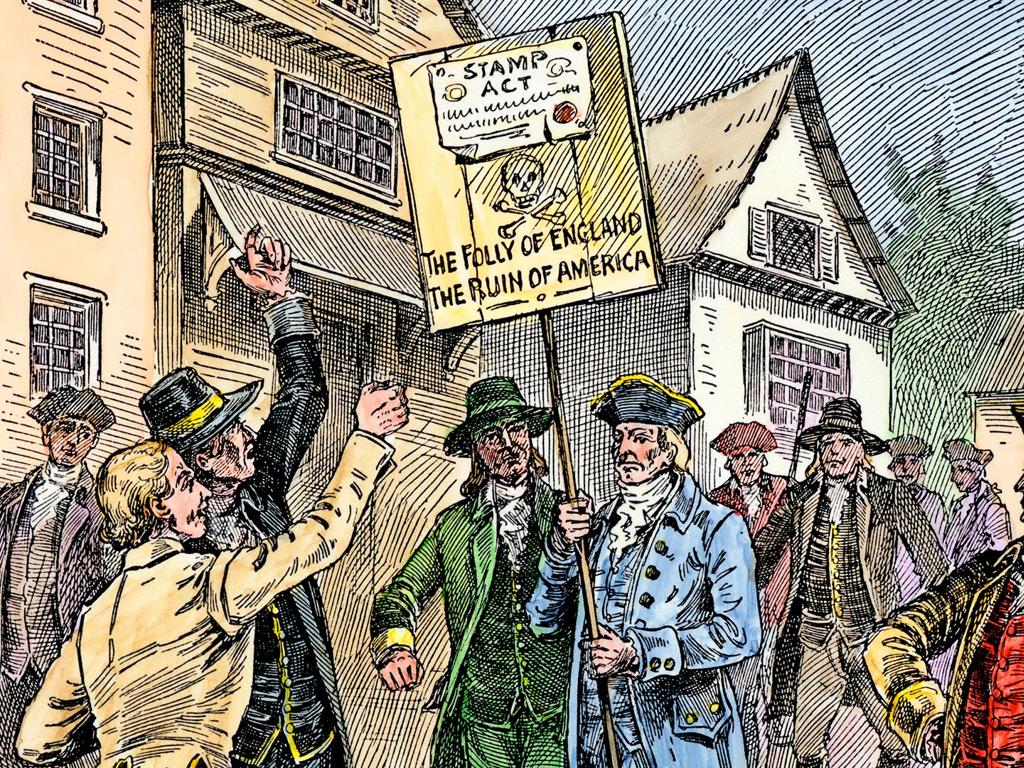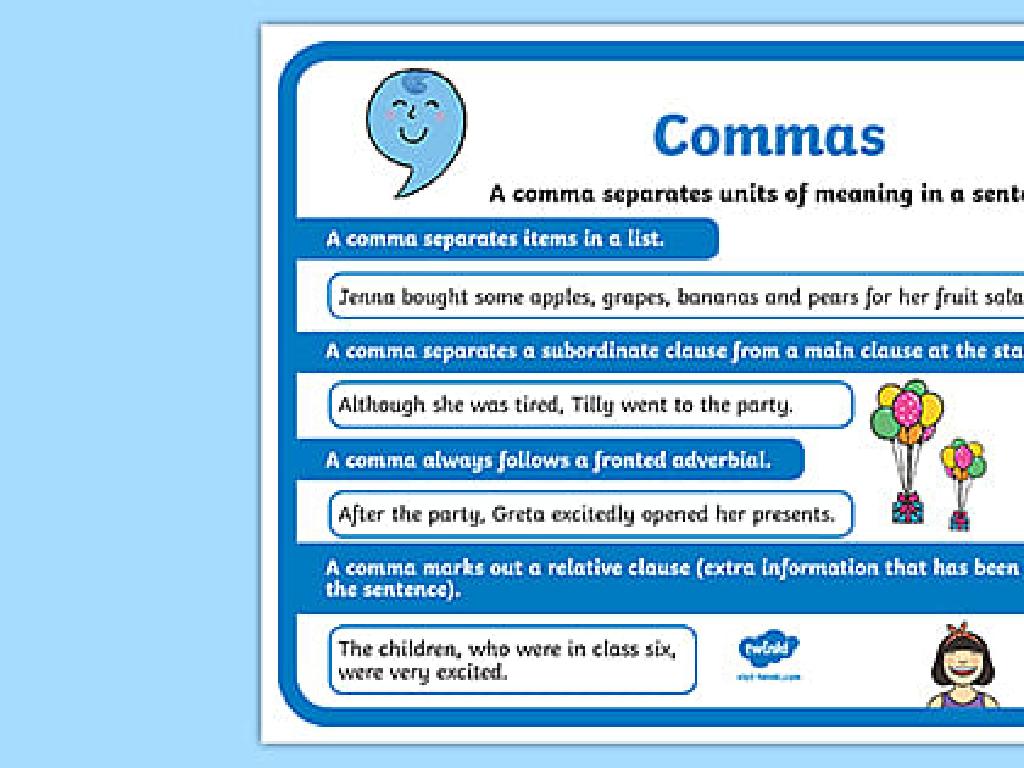Classify Matter As Solid Or Liquid
Subject: Science
Grade: First grade
Topic: States Of Matter
Please LOG IN to download the presentation. Access is available to registered users only.
View More Content
Exploring Solids and Liquids
– Matter comes in different forms
– Today’s focus: Solids and Liquids
– Solids: Hard and keep their shape
– Examples: Rock, ice-cream cone
– Liquids: Flow and take shape of container
– Examples: Water, milk
|
This slide introduces the concept of matter and its different states, specifically solids and liquids, to first-grade students. Begin by explaining that everything around us is made of matter and that matter can be in different forms. Highlight the characteristics of solids, such as their fixed shape and firmness, using familiar examples like rocks or an ice-cream cone. Then, describe liquids, emphasizing their ability to flow and take the shape of their containers, with examples like water or milk. Encourage the students to think of other examples from their daily lives and be prepared to discuss these in the next class. This will help them relate the concept to the real world and enhance their understanding.
Exploring Matter: Solids and Liquids
– Matter is everything around us
– Matter takes up space and has mass
– Characteristics of solids
– Solids have a fixed shape and don’t flow
– Characteristics of liquids
– Liquids can flow and take the shape of their container
|
This slide introduces the concept of matter to first-grade students, emphasizing that everything they can touch and see is made of matter. Matter is defined by its ability to occupy space and have mass. The slide then focuses on two states of matter: solids and liquids. Solids are explained as having a definite shape that doesn’t change, making them easy to hold and stack. Liquids are described as substances that can flow and take the shape of their containers, like water or milk. Use examples like blocks for solids and juice for liquids to help students relate to the concepts. Encourage students to think of other examples of solids and liquids in their environment.
Exploring Solids in Science
– Solids have their own shape
– Solids don’t flow like liquids
– Solids can be held easily
– Think of rocks or books, they don’t change shape when you pick them up
– Examples of solids around us
– Chairs, tables, and toys are all solids
|
This slide introduces the characteristics of solids to first graders. Emphasize that solids are unique because they maintain their shape regardless of where they are placed. Unlike liquids, solids do not pour or take the shape of their containers. Encourage students to think about and interact with objects in the classroom that are solids, such as their desks, chairs, or books. Ask them to describe how these objects feel and why they can hold them without changing their shape. This tangible experience will help solidify (pun intended) their understanding of the concept of solids in the context of states of matter.
Exploring Liquids
– Liquids match container shapes
– Like water in a cup or a bottle
– Liquids can flow easily
– Watch water flow in a stream
– Pouring shows liquid movement
– Try pouring water into different containers
– Liquids change shape when poured
|
This slide is aimed at helping first graders understand the characteristics of liquids. Start by explaining that liquids, unlike solids, don’t have a fixed shape and can take the shape of their containers, such as water in a cup or juice in a bottle. Demonstrate how liquids can flow by comparing them to water in a stream or milk being poured. Engage the students by asking if they’ve ever poured a liquid and discuss how it moves and changes shape. You can bring in small containers and safe liquids for a hands-on activity where students pour water from one container to another to see this property in action. Emphasize that while the liquid can change shape, the amount of liquid stays the same.
Let’s Compare Solids and Liquids
– Solids keep their own shape
– Like blocks or ice cubes, they stay put
– Liquids take the shape of containers
– Like water or milk, they spread out
– Solids don’t flow like liquids
– Solids are firm; liquids pour and splash
– We can stack solids, not liquids
– Try stacking blocks vs. pouring water
|
This slide is designed to help first graders understand the basic differences between solids and liquids. Start by explaining that solids are hard and keep their shape, like a rock or a toy, while liquids are wet and take the shape of whatever they’re in, like water in a glass. Show that solids, such as blocks, can be stacked because they hold their shape, whereas liquids like juice cannot be stacked and will just flow away. Use hands-on examples if possible, such as play dough (solid) and a small cup of water (liquid), to demonstrate these concepts in a tangible way. Encourage the students to think of their own examples of solids and liquids in their environment.
Solids and Liquids Around Us
– Examples of solids: toys, books, chairs
– Solids have a fixed shape; they don’t change if we move them
– Examples of liquids: water, juice, milk
– Liquids flow and take the shape of their container
– Can we pour or stack them?
– Observing solids and liquids
– Let’s look around to find items and decide if they’re solid or liquid
|
This slide is aimed at helping first graders identify and classify objects in their environment as solids or liquids. Start by discussing the properties of solids, emphasizing that they maintain their shape and can be held and stacked. Then, explore liquids, highlighting that they take the shape of their containers and can be poured. Use interactive questions to engage the students, asking them to think about whether various items can be poured or stacked. Encourage them to look around their homes or the classroom for examples of each state of matter. This activity will help them understand the concept of matter and its different states in a tangible and relatable way.
Class Activity: Sorting Solids and Liquids
– Sort objects into solids and liquids
– Touch and feel different objects
– Objects like rocks (solid) and water (liquid)
– Decide if it’s a solid or a liquid
– Place objects in the correct box
|
This interactive class activity is designed to help first graders understand the concept of states of matter by classifying objects as solids or liquids. Provide a variety of objects for the students to touch and feel, such as rocks, blocks, water, and oil. Guide them to observe the properties of each object, discussing how solids hold their shape while liquids take the shape of their container. Have two labeled boxes ready for sorting: one for solids and one for liquids. Encourage students to work together and discuss their reasoning as they classify each object. Possible variations of the activity could include using different temperatures of liquids, comparing how sand can behave like a solid and a liquid, or sorting objects that are hard to classify, like playdough or slime, to spark discussion.
Wrapping Up: Solids and Liquids
– Congratulations on learning about states of matter!
– Solids keep their shape; liquids flow.
– Like ice (solid) vs water (liquid).
– Share what you’ve learned with family.
– Explain the difference between solids and liquids.
– Practice identifying solids and liquids at home.
– Find examples of solids and liquids around you.
|
Great job, students! Today, we’ve learned that matter can be solid, like a rock, or liquid, like water. Solids don’t change their shape unless we cut or break them, while liquids take the shape of their container. Encourage the students to observe objects at home and categorize them as solids or liquids. Ask them to explain to their family members what makes something a solid or a liquid. This will help reinforce their understanding and give them the confidence to discuss what they’ve learned. For the next class, be prepared to share your findings and discuss more about how matter can change from solid to liquid and vice versa.





